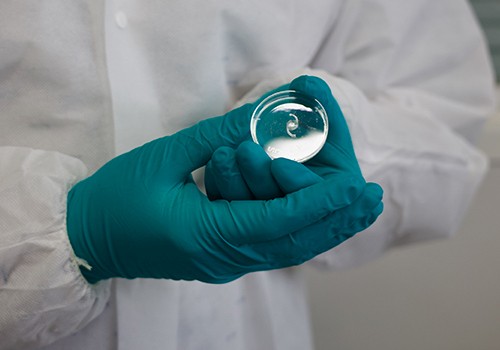Industry News
Innovative 3D Printing To Enhance Eye Implants Manufacturing
 Researchers at the University of East Anglia (UEA) in UK have achieved a groundbreaking advancement in ocular device technology by developing a novel resin for 3D printing intraocular lenses (IOLs). This development promises to revolutionise the manufacture of eye implants used in cataract and refractive surgeries.
Researchers at the University of East Anglia (UEA) in UK have achieved a groundbreaking advancement in ocular device technology by developing a novel resin for 3D printing intraocular lenses (IOLs). This development promises to revolutionise the manufacture of eye implants used in cataract and refractive surgeries.
Led by Dr. Aram Saeed, Associate Professor in Healthcare Technologies at UEA’s School of Pharmacy, the team has created a resin enabling the direct 3D printing of ocular devices. This innovation allows for unprecedented customisation and design precision, potentially improving patient outcomes significantly.
Intraocular lenses are essential for individuals with cataracts and can also correct refractive errors such as myopia, hyperopia, and presbyopia. Traditionally made from materials like glass and silicone, modern IOLs predominantly use acrylic materials due to their superior optical clarity, flexibility, and biocompatibility. Current manufacturing methods, including lathing and molding, though effective, limit design complexity and customisation.
Dr Aram Saeed said: “3D printing could significantly enhance the production of ocular devices, not only improving speed and precision in manufacturing but also enabling greater complexity and customisation in design. Our proof-of-concept paper is the first in a series that will detail our developments in this area and set the stage for transforming eye care practices globally. Our work combines material science with healthcare technology and requires extensive know-how in developing these types of ocular devices. As we continue to publish our findings and share our advancements, we aim to be at the forefront of the industry, working with industrial partners and researchers worldwide to refine and enhance the technology."
The advantages of this technology are manifold:
- Tailored Lenses: Customized to individual eye shapes and vision requirements, improving correction and comfort.
- Faster Production: Reducing the time from diagnosis to surgery, facilitating quicker patient care.
- Complex Designs: Enabling intricate shapes to address a broader range of vision problems.
- Cost Reduction: Potentially lowering production costs, making high-quality lenses more accessible, especially in economically disadvantaged regions.
- Material Innovation: Allowing the creation of new materials with better optical performance, enhancing vision correction.
The 3D printed lenses exhibit excellent optical clarity and can be folded and implanted into the human eye. Further development is ongoing, including efforts to scale the process and improve printing resolution for better accuracy. Clinical trials are anticipated to begin within a few years.
Co-author Michael Wormstone, Emeritus Professor at UEA’s School of Biological Sciences, said: “If successful in further developments, this new technology could transform the industry by enabling portable manufacturing solutions, especially beneficial in remote and economically disadvantaged areas. It also has the potential to support the production of premium, customised lenses that could enhance surgical outcomes in more advanced healthcare settings."
The UEA team, recognised with a U.S. patent, collaborates closely with industry partners and the ophthalmology department at Norwich and Norfolk University Hospital (NNUH) to refine the technology. Anas Injarie, a leading consultant ophthalmologist at NNUH, emphasized the potential for tailored treatments to enhance patient satisfaction and surgical success, particularly in premium markets.
This innovation from UEA represents a significant leap forward in ocular device technology, promising to improve global eye care and patient outcomes.
The research is published in the journal Current Eye Research.



